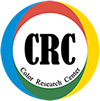Prof. Mitsuo Ikeda Research
If any one feels inconvenient in his/her daily life he/she is not happy and we have responsibility to take out the inconvenience from him/her as scientists. One serious inconvenience that elderly people experience is a low visibility for objects placed inside a building when they look at the objects from outdoor. The outdoor is normally very bright in daytime and the inside of a building is much darker. Young people can see the objects inside the building in spite of the difference of illumination level but elderly people can’t see them at all sometime. This is because of cataract of their eyes. It was made clear by many experiments done by Ikeda and his colleagues that the cataract lenses scatter light coming from outside environment into the eyes. When they look at the inside the dark building the scattered light in the eyes overlay the retinal image of the objects and they can’t see the objects but only black inside. Their QOL becomes inevitably extremely poor. This QOL laboratory tries to solve this problem by proper illumination inside a building. A simulated building is constructed in the laboratory and an observer looks inside the building where colored targets and letters are placed. The observer detects the targets and letters with cataract experiencing goggles and without goggles for various combinations of illuminance levels of inside and outside. How much illuminance should be increased for the cataract eyes compared to the normal eyes will be obtained. The laboratory is supervised by Prof Mitsuo Ikeda, who did a lot of experiments on color appearance with the cataract experiencing goggles both at Ritsumeikan University in Japan and at Chulalongkorn University.
Article/Paper Published
Year 2016
Road luminance at tunnel and underpass entrance for safe driving of elderly people.
T. Takeuchi, C. Phuangsuwan, M. Ikeda, and N. Suwannasatit.
Proceedings of The 3rd International Conference of Asia Color Association, China; pp. 192-195 (2016)
Comparison of the chromatic adaptation between LED and fluorescent lamps to investigate the color constancy by adapting –adapted color appearance.
C. Phuangsuwan and M. Ikeda.
Proceedings of The 3rd International Conference of Asia Color Association, China; pp. 165-168 (2016)
Whiteness (W) and lightness (L*) relationship.
C. Phuangsuwan, S. Saingsamphun, and M. Ikeda.
Proceedings of The 3rd International Conference of Asia Color Association, China; pp. 147-150 (2016)
Proper indoor illuminance for elderly people to see signs from outdoors.
M. Ikeda, C. Phuangsuwan, and C. Pamano.
Proceedings of The 3rd International Conference of Asia Color Association, China; pp. 117-120 (2016)
Year 2015
Color constancy depends on initial visual information Proceeding of Midterm Meeting of International Color Association.
Phuangsuwan, C., Ikeda, M. and Chunvijitra K.
Proceeding of AIC2015 Midterm Meeting of International Color Association. Japan pp. 798-803
Adapting and adapted colors under colored illumination.
Ikeda, M., Phuangsuwan, C. and Chunvijitra K.
Proceeding of Midterm Meeting of International Color Association. Japan pp. 793-797
Year 2014
Chromatic adaptation is not for object but for illumination.
Ikeda M., Naksuwan W. and Phuangsuwan C.
Journal of Color Science Association of Japan 38 (2014) 174-175
Relationship between the adapting and adapted color under colored illumination.
Ikeda M., Phuangsuwan C. and Chunvijitra K.
Journal of Color Science Association of Japan 38 (2014) 436-437.
Demonstration of Color Constancy in Photographs by Two Techniques
Phuangsuwan C., Ikeda M., and Shinoda H.
Journal of Optical Reviews Vol. 21 No. 6 (2014) 810-815.
Year 2013
Color constancy demonstrated in a photographic picture by means of a D-up viewer
Phuangsuwan C., Ikeda M., and Katemake P.
Optical Reviews vol.20 (2013) 74-81
Equivalent lightness of elderlies investigated by cataract experiencing goggles.
Wongsompipatana P., Ikeda M., Katemake P
Color Research and Application vol.38(2013), 267–276.
Year 2012
The color constancy in a 3D space perceived stereoscopically
Phuangsuwan C., Shinoda H., Rattanasamsuk K., Ikeda M., Katemake P.
Journal of Color Science Association of Japan vol.36(2012) 222-223.

